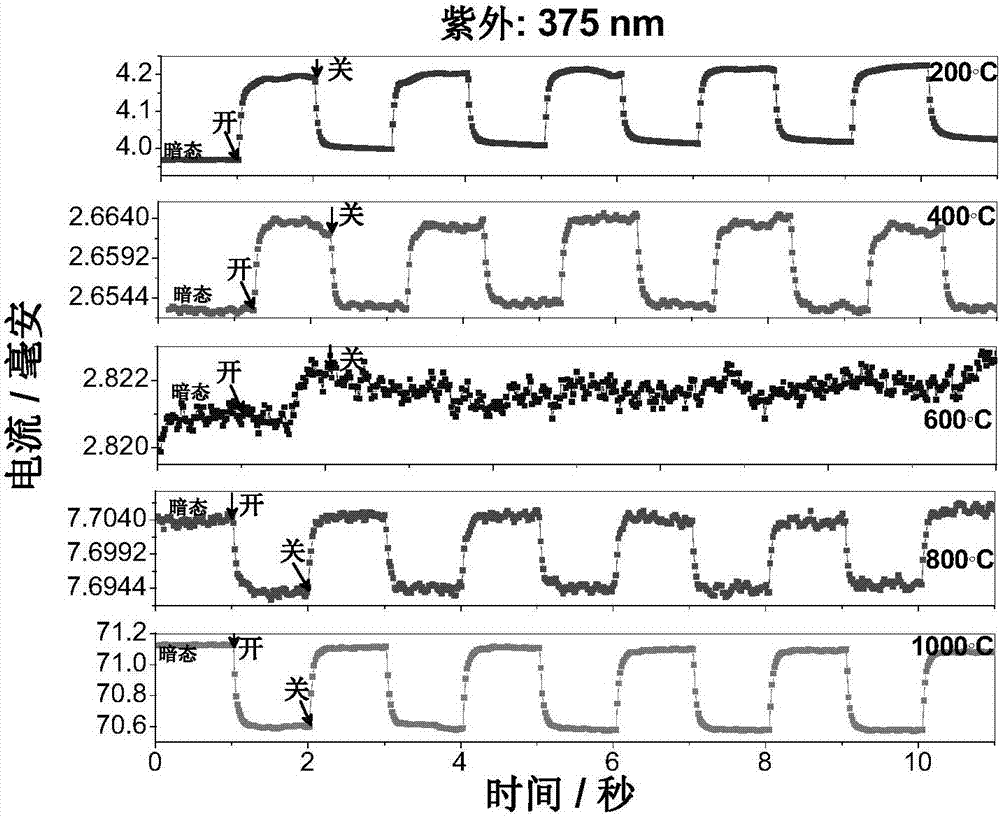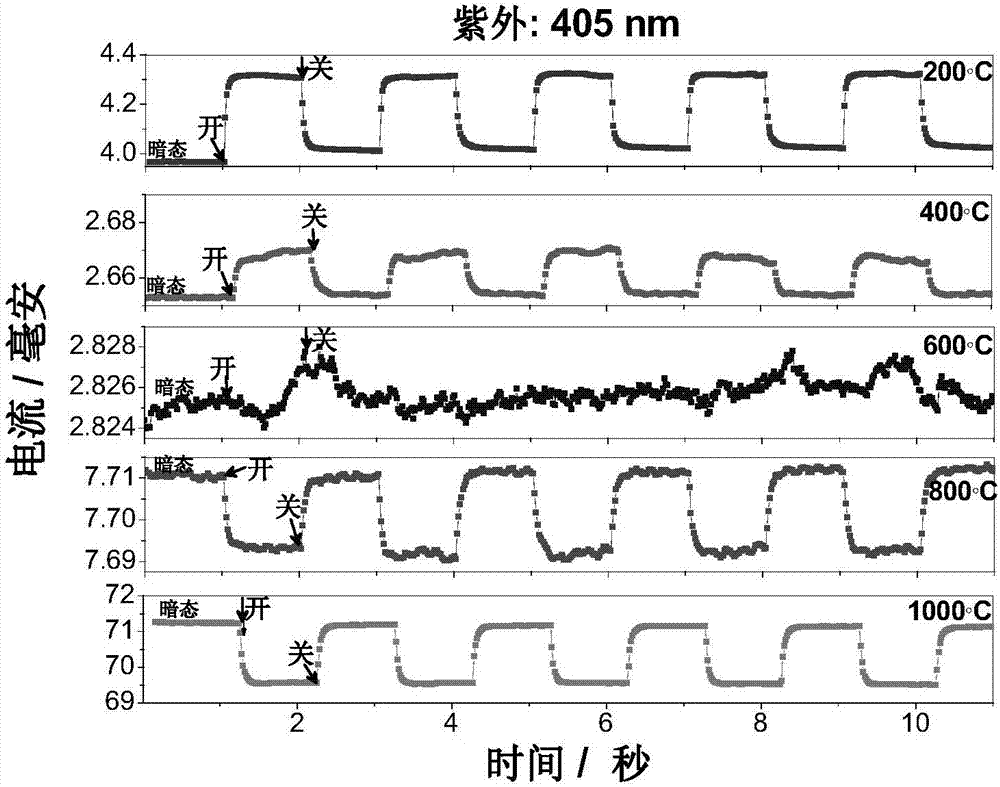Ultra-wide spectrum light detector
A photodetector and ultra-broadband technology, applied in the field of optoelectronics, can solve the problems of complex structure of broadband photodetection system and few broadband photodetectors, and achieve novel structure, wide range of detection spectrum and simple preparation Effect
- Summary
- Abstract
- Description
- Claims
- Application Information
AI Technical Summary
Problems solved by technology
Method used
Image
Examples
Embodiment 1
[0049] Preparation of self-supporting reduced graphene oxide films as photosensitive materials:
[0050] Disperse graphene oxide in ethanol by ultrasound for 2-4 hours to prepare a 0.2-1.0 mg / mL graphene oxide ethanol dispersion, which is divided into 6 cycles and drip-coated on an area of 1.8×1.5cm 2 On the silicon nanowire array, each cycle is divided into 3 times of drop coating, each time according to 25 ~ 35μL / cm 2 Slowly drip-coat the dispersion, and after each cycle, put it in an oven at 60°C for 3 minutes until dry, and then proceed to the next cycle; dry the above-mentioned sample that has been drip-coated naturally in the air; in 5% hydrogen and 95% Under the protection of argon atmosphere, keep the pressure at 84Pa and heat treatment at 200°C for 3 hours to prepare a self-supporting reduced graphene oxide film with the same area and shape as the silicon nanowire array.
[0051] Fabrication of ultra-broadband photodetectors:
[0052] First, fix the self-supportin...
Embodiment 2
[0056] The same experimental procedure as in Example 1 was used to fabricate the detector, except that the heat treatment temperature for preparing the self-supporting reduced graphene oxide film was 400°C.
[0057] The real photo of the detector is as figure 1 Shown in (b).
[0058] The detection performance of the detector from ultraviolet to terahertz is as follows: Figure 2-9 As shown, the results show that compared with the dark state, the response signal of the detector to light is characterized by an increase in current, a stable signal, and good reproducibility. Light detection from ultraviolet to terahertz can be achieved, and the detector response time and recovery The time is on the order of hundreds of milliseconds. However, the photoresponsivity of this detector is lower than that of the self-supporting reduced graphene oxide film detector prepared by heat treatment at 200°C, as shown in Table 1.
Embodiment 3
[0060] The same experimental procedure as in Example 1 was used to fabricate the detector, except that the heat treatment temperature for preparing the self-supporting reduced graphene oxide film was 600°C.
[0061] The real photo of the detector is as figure 1 Shown in (c).
[0062] The detection performance of the detector from ultraviolet to terahertz is as follows: Figure 2-9 As shown in Table 1, the results show that, compared with the dark state, the response signal value of the detector to light is almost zero or the signal shows that the current increases but the value is small. Therefore, it is considered that the self-supporting reduction of Graphene oxide thin film detectors are poor for detection from ultraviolet to terahertz.
PUM
 Login to View More
Login to View More Abstract
Description
Claims
Application Information
 Login to View More
Login to View More - R&D Engineer
- R&D Manager
- IP Professional
- Industry Leading Data Capabilities
- Powerful AI technology
- Patent DNA Extraction
Browse by: Latest US Patents, China's latest patents, Technical Efficacy Thesaurus, Application Domain, Technology Topic, Popular Technical Reports.
© 2024 PatSnap. All rights reserved.Legal|Privacy policy|Modern Slavery Act Transparency Statement|Sitemap|About US| Contact US: help@patsnap.com










